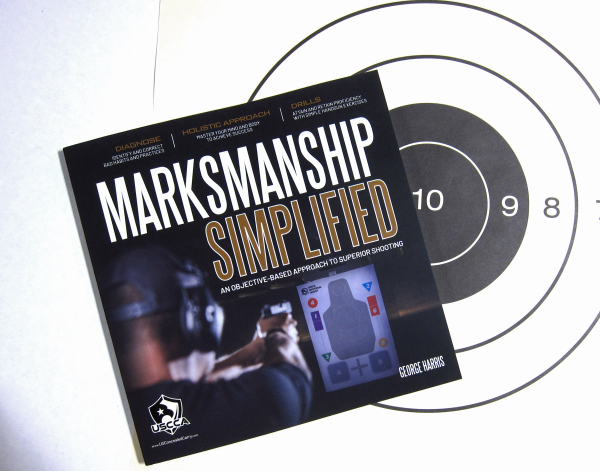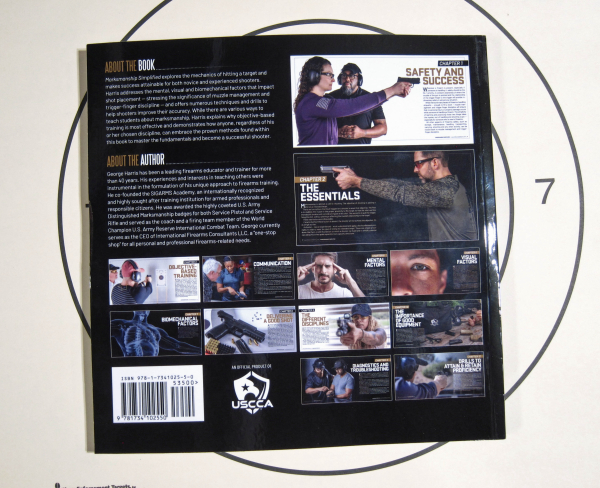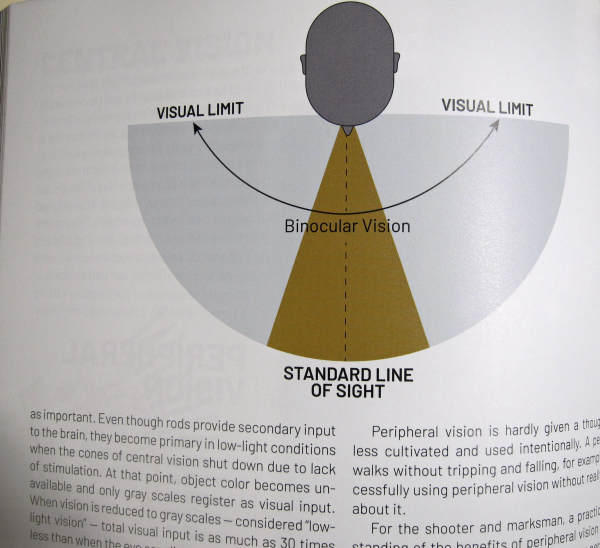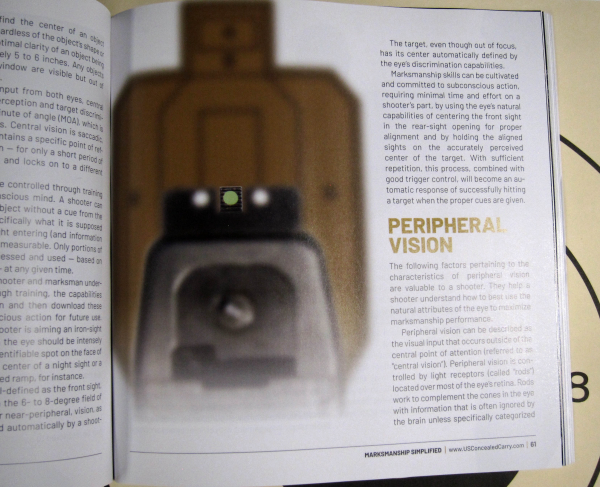Why would a book review be entitled “Fundamentals of Instruction?” Because the book is a primer on teaching a complex psychomotor skill: shooting.

The book is from one who is likely one of the top five firearms instructors extant, George Harris. The President and CEO of International Firearms Consultants, LLC, his book is MARKSMANSHIP SIMPLIFIED: An Objective-Based Approach to Superior Shooting. It’s “learn to shoot” in a can. It’s brief, to the point, with enough explanatory material regarding the why? -- without being tedious – to tell the tale.
Available in the USCCA online store, the 175-page tome is well-illustrated. Knowing George – having received emails about my features in the wires and telephone conversations – I can hear his voice as I read the text.
The hallmark of a good editor is to take someone’s written voice and do necessary work to it without changing the writer’s voice. Having read this, there’s nothing I’d change. And it hearkens to a conversation we had just a short time ago about field accuracy.
While I concentrated on the critical aspect of GRIP and relegated the human primacy of vision to second place, his concern was dealing with the new shooter.
Not an easy task.

What are his qualifications? He earned Army Distinguished ratings in Service Pistol and Service Rifle, coached the World Champion US Army Reserve International Combat Team of which he was also a member and he co-founded the SIG Sauer Academy. A writer of owner’s manuals, armorer manuals, training manuals, he’s been a contributor to national publications.
Getting someone ‘over the hump’ to competent gun handling and shooting the one-handed gun can be an exercise in near-futility. To hear him tell it – and he’s right, I’ve seen it – you’re asking someone to hold a loud, bucking, dangerous device in hand and keep it still, while it does its job. That ain’t normal.
He explained his “inoculation” drill. It’s designed to prevent the completely normal ‘flinch’ response (with the attendant convulsive clutch when the “boom” is expected) using some understanding of the function of human physiology.
Published in AMERICAN COP in 2010, he explained the drill in detail. We discussed it in terms of how to teach. To do that we need to know how people learn.


There’s enough material just on firearms safety to choke a horse. When it was reduced to The Rules, we found that “four is plenty.” A student, already trying to drink from the fire hose, is bound to forget some things. Cutting four to two for purposes of initial range work is helpful, particularly when working with one student instead of a group.
Clive Shepherd called them “the two main physical safety checks.” George refers to “muzzle management” and “trigger finger discipline.” Once they know where the muzzle is and where the target is, we can proceed.
To inoculate, we need a safe location – a bullet-absorbing backstop with no material being thrown back to the shooter.
A trainee has enough about which to be concerned.
Describe the sensation of shooting; the ‘pop’ you hear through the ear pro, the little push you feel as the gun functions. The only job is to aim in on the backstop, close your eyes and feel the push as you hear the pop.
That’s it. Just know it won’t hurt to shoot it. There’s no blast – just a pop. There’s no “kick” (who came up with that term?), just a push. Direct the shooter for a few rounds. Then let them fire a few on their own. That’s not all, but it’s a good start.
George tells us that the amygdala, the emotional control centers in the brain, will (appropriately) cause you to pull away from an abrupt noise, with your eyes slamming shut (to protect the eyes) and your hands convulsively clutching. If the amygdala gets programmed through a bit of eyes closed shooting – just listening and feeling – the result is not to ‘fear the shot.’
Another technique he uses is thoughtful communication. How do you describe the sight picture during the trigger press?
“Keep the sights aligned, centered on the target and, during the natural arc of movement, press the trigger, allowing the gun to fire.”
How about “when the sights are floating over the target, use your trigger finger to pull the front sight back through the rear sight” – think that works better? It’s what he told me in response to a piece I wrote when I mentioned I was pushing left with a T&E gun.
His explanation uses the brain -- “pull the front back through the rear aperture with the trigger finger” -- as well as the hand and vision. There’s equal responsibility for each cognitive component.
Is this book a good one for the beginning shooter? – Sure.
Is it a primer to show how to instruct physical skills? – Definitely.
Give it a look. It needs to be in your library – after you read it and take notes.
-- Rich Grassi